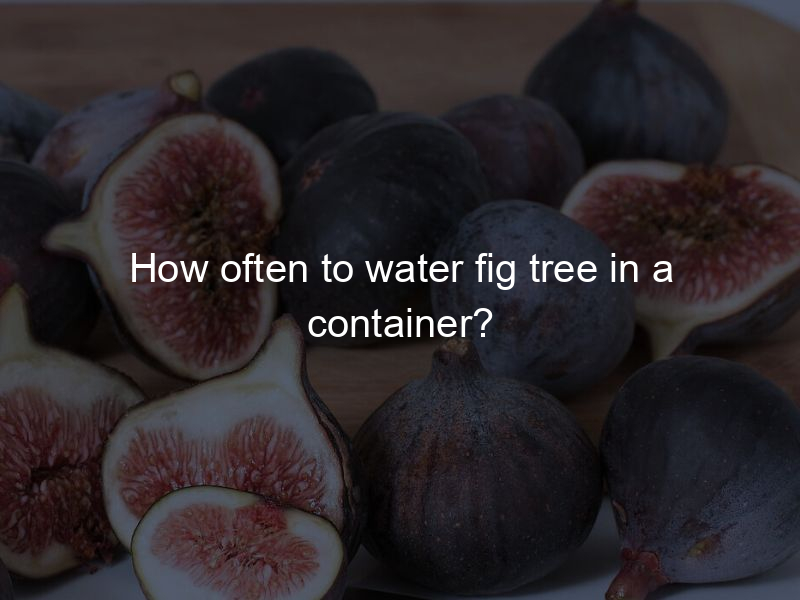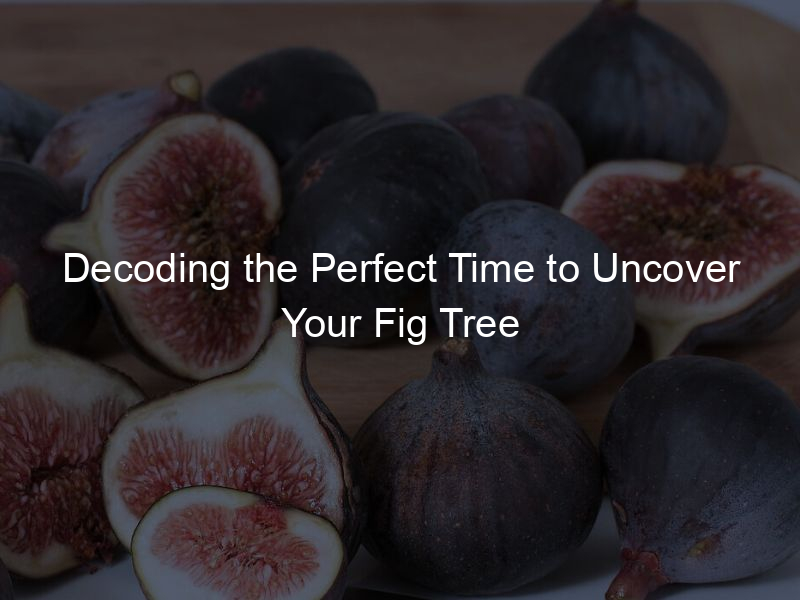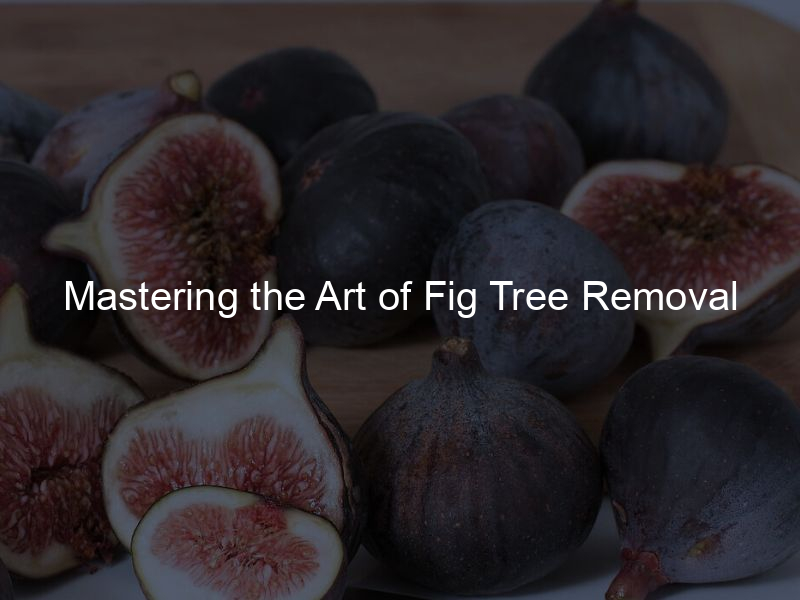Is your fig tree in a container?
Then you know that compared to their outdoor counterparts, plants in containers require more careful looking after as they are much more prone to drying out due to their exposed roots.
Have no idea when or how often it needs watering? Don’t worry—we’re here to help! Our blog post today will go through everything you need to know about caring for an indoor fig tree container, from the right soil mix and pot size needed for planting all the way through daily maintenance tips like pruning and — yes — exactly how often (and how much) you should be watering your beloved plant. Let’s get started!
Understanding Soil Types and How They Impact Fig Tree Watering
Fig trees have long been a favorite among gardeners due to their sweet fruit and manageable size. However, these trees require specific care, and one of the most important factors gardeners need to consider is the type of soil their fig tree is planted in.
Different soil types can have a significant impact on the tree’s water needs. For example, sandy soil drains water quickly, which can lead to dry conditions for your tree. In contrast, clay soil drains water slowly, making it easier for the tree’s roots to absorb moisture. Understanding your soil type and how it impacts fig tree watering is key to ensuring your tree grows strong and healthy.
By taking the time to learn about your soil and adjust your watering practices accordingly, you can enjoy a bountiful fig harvest year after year.
When to Water Your Fig Tree in a Container?
When it comes to fig tree watering, timing is everything. Knowing when and how often to water your tree can mean the difference between a healthy harvest and an unhealthy (and likely sad-looking) one. Generally speaking, you should aim to water your fig container once every five days during the spring and summer months.
However, once the tree enters a period of dormancy (usually in late fall), you can reduce your watering frequency to once every two weeks or so.
When you do water your fig container, make sure that the water is distributed evenly throughout the soil. Avoid excessive watering, as this can lead to root rot and other problems. Additionally, be sure to water at the roots of the tree rather than over-spraying from above, which can cause mold and fungus to form on the leaves.

Fig Watering Tips for Different Container Sizes
Fig trees are a great addition to any garden, but for those with limited outdoor space, growing them in containers may be the way to go. If you’re looking to grow your own figs in containers, it’s important to know that different sizes require different watering techniques.
For smaller containers, aim to water your fig tree every one to two days, making sure the top inch of soil stays moist. For larger containers, you may only need to water every four to five days.
However, always be sure to check the soil regularly and adjust your watering schedule accordingly. By providing your fig tree with the proper amount of water, you’ll be well on your way to a bountiful harvest of delicious and juicy figs!
Fertilizing Your Fig Tree
As a fig tree owner, you want to ensure that your tree is not only producing a bountiful harvest but also thriving in terms of its overall health. One of the most important things you can do to enhance your fig tree’s well-being is to properly fertilize it.
Fertilizing your fig tree provides it with the necessary nutrients to produce healthy foliage, promote fruit production, and strengthen its root system. There are a variety of fertilizers on the market, so it’s important to choose the right one based on your particular tree’s needs.
Whether you opt for organic or synthetic fertilizer, the key is to find a balance that will support your fig tree’s growth without causing any harm to the environment. With the right nutrients and care, your fig tree will thrive and serve you with delicious figs for years to come.

Signs of Overwatering and Underwatering in a Fig Tree
Caring for a fig tree can be an incredibly rewarding experience, but it can also be tricky. Knowing how much water to give your tree is key to ensuring its optimal health. Overwatering can lead to root rot, while underwatering can cause your tree to wilt and eventually dry up.
Fortunately, there are several signs that can help you determine if your fig tree is receiving the proper amount of water. By keeping a close eye on the leaves and stems, as well as the moisture level of the soil, you can ensure that your fig tree stays happy and healthy for years to come.
Adding Mulch Around the Fig Tree Root System
Maintaining a healthy and productive fig tree in your garden requires careful attention and nourishment. One of the key aspects to consider is moisture retention around the tree root system. While watering the tree regularly is crucial, adding mulch can significantly improve water retention and prevent rapid evaporation.
Mulch acts as a protective layer, keeping the soil cool and moist, allowing the tree roots to absorb the water they need to thrive. Apart from improving the soil’s water-holding capacity, mulch also helps reduce weed growth, soil erosion, and soil compaction around the tree. By adding mulch, you are not only creating ideal growing conditions for the fig tree but also providing an aesthetically pleasing look to your garden.

Varieties ideal for pot cultivation
When selecting a fig tree variety for planting in a pot, it’s important to choose one that is well-suited to container growing and fits your climate and preferences. Here are some recommended varieties of fig trees known for their adaptability to container cultivation:
- Brown Turkey (Ficus carica ‘Brown Turkey’): Brown Turkey figs are one of the most popular varieties for container growing. They are hardy, productive, and known for their sweet, flavorful fruits. This variety also tends to be more cold-hardy compared to some other fig varieties.
- Celeste (Ficus carica ‘Celeste’): Celeste figs are another excellent choice for containers. They are compact in size and well-suited to smaller spaces. Celeste figs produce sweet, small-to-medium-sized fruits and are relatively cold-hardy.
- Chicago Hardy (Ficus carica ‘Chicago Hardy’): As the name suggests, Chicago Hardy figs are known for their cold tolerance, making them suitable for container growing in colder climates. They produce medium-sized, sweet fruits and are more forgiving of winter temperatures.
- Black Mission (Ficus carica ‘Black Mission’): Black Mission figs are prized for their rich, sweet flavor and dark purple-black skin. While they may require a larger container due to their vigorous growth habit, they can still be grown successfully in pots, especially with regular pruning.
- Kadota (Ficus carica ‘Kadota’): Kadota figs are known for their greenish-yellow skin and sweet, honey-like flavor. They are relatively compact in size and well-suited to container cultivation. Kadota figs also have a high resistance to pests and diseases.
- Lattarula (Ficus carica ‘Lattarula’): Also known as the Italian Honey fig, Lattarula figs are prized for their sweet, juicy fruits and amber-colored skin. This variety is well-suited to container growing and tends to produce a heavy crop of figs.
When planting a fig tree in a pot, choose a container that is at least 18-24 inches in diameter and has drainage holes to prevent waterlogging. Use a well-draining potting mix, and place the tree in a location that receives full sun. Regular watering, fertilizing, and occasional pruning will help ensure healthy growth and abundant fruit production.
In conclusion, fig tree watering requires knowledge about the particular soil type and how it impacts water absorption and retention. Knowing when to water your fig tree is important for successful tree growth – generally, you should adjust for seasonal changes such as an increase in cooler weather. Different container sizes will dictate how much water should be used. Adding fertilizers can give the tree added nutrients and promote healthy growth while giving it a boost.
Too much or too little watering can create the same level of damage to a tree’s root system – being alert for signs of both overwatering and underwatering are good ways to keep your fig tree in tip-top shape. Finally, adding mulch around the base can greatly reduce evaporation and help with moisture retention in the root system. With a better understanding of all these components of fig tree watering, any gardener can enjoy a thriving plant happily producing delicious figs!









